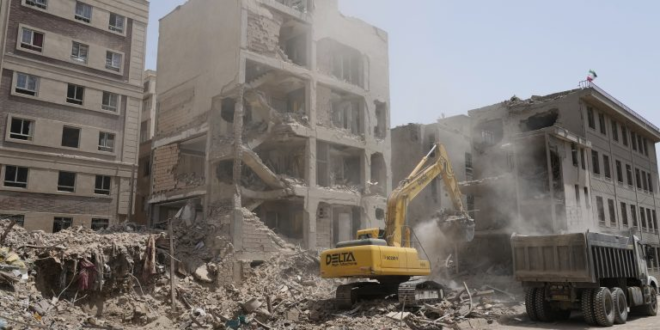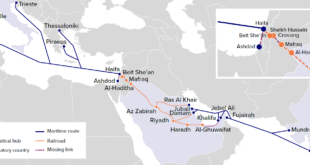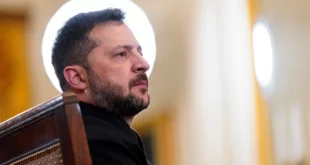The Iran-Israel conflict confirmed a shift in the regional balance of power away from Iran, but might set the stage for further combat.
U.S. and Israeli officials have defined a “new normal” in which either will take further military action if Iran tries to advance its nuclear program.
Gulf and other Arab states welcome the weakening of Tehran, but at the same time fear Israeli hegemony and Israel’s willingness to apply military power in the region.
Trump officials seek to pivot from the Iran-Israel war to brokering a resolution of the Gaza conflict and fostering additional Arab-Israeli peace agreements.
A U.S.-brokered ceasefire in the Israel-Iran war has largely held since taking effect last week, leaving U.S., regional, and international strategists to assess the implications of the 12-day war. Strategists agree that the conflict shifted the Middle East balance of power further against Iran and toward an Israel willing to apply military power broadly in the region. In his first post-ceasefire comments on Thursday, from an undisclosed location, Iran’s Supreme Leader Ayatollah Ali Khamenei, warned against further attacks on Iran and portrayed Iran’s most symbolic retaliatory strike on the main U.S. regional military hub in Al Udeid Air Base in Qatar, on Monday, as a “slap to America’s face.” A post on his social media sites added that Israel’s government “was practically knocked out and crushed under the blows of the Islamic Republic.” His claims that U.S. and Israeli strikes did little damage to Iran contradicted assertions by Iranian government leaders that the U.S. and Israeli strikes seriously damaged Iran’s nuclear and ballistic missile sites. Iran’s Axis of Resistance partners largely stood aside during the warfare, fearing Israeli or U.S. retaliation, and Iran’s powerful partners, Russia and China, gave Tehran no more than rhetorical support. On Saturday, however, the Houthi movement in Yemen fired the first missile it has launched on Israel since the Israel-Iran ceasefire. At the same time, Israeli leaders acknowledged Iran’s retaliatory missile barrages did significant damage in Israel, demonstrating increasing Iranian capabilities to evade Israeli and U.S. missile defense systems.
Analyzing the regional balance of power, regional and global strategists assess that Iran will struggle to restore deterrence over its adversaries. President Trump and Israeli Prime Minister Benjamin Netanyahu have each asserted they would take “preventive” military action against Iran if the regime seeks to reconstitute its uranium enrichment program, or if subsequent battle damage assessments (BDA) determine Iran’s capability to produce a nuclear weapon, were there a decision to do so, is intact. By threatening further strikes, the U.S. and Israel are establishing a “new normal” in the region, in which further conflict with Iran, as well as Iranian retaliation, could erupt at any time. On Friday, asked whether he would consider new strikes if the U.S. and Israel had not succeeded in ending Iran’s uranium enrichment program, Trump said, “Sure, without question, absolutely.” Also on Friday, Israeli Defense Minister Israel Katz said: “I instructed the [Israel Defense Force] to prepare an enforcement plan that includes, maintaining Israel’s air superiority, preventing nuclear advancement and missile production, and responses to Iran for supporting terrorist activities against the State of Israel.” Israel has used similar tactics in Lebanon and Syria, where, even during its campaign against Iran, it continued to strike the strategic military assets of Lebanese Hezbollah and the Syrian regime, respectively.
At the same time, Trump’s team assesses, as do global proliferation experts and the International Atomic Energy Agency (IAEA), that only a nuclear accord with Iran can ensure its nuclear program is used for purely peaceful purposes. NBC reported Saturday that U.S. Special Envoy for the Middle East Steve Witkoff will meet this week with his Iranian counterparts to resume the negotiations that Israel’s air campaign derailed. However, despite the damage done to Iran’s nuclear infrastructure, Iranian officials have given no indication they are ready to accept Trump’s demand that Iran end all enrichment of uranium and eliminate any surviving stockpile of enriched uranium.
Gulf and other Arab and regional leaders hope that Washington and Tehran can reach an agreement that spares the region any more major warfare, but remain unsettled over the potential for the U.S. or Israel to re-ignite conflict with Iran on short notice. Should war erupt again, there are numerous pathways for conflict to expand and intensify, as happened after the October 7, 2023, Hamas attack on Israel. Gulf leaders assess that the perception that the Israel-Iran ceasefire is unstable will derail their efforts to concentrate on ambitious economic diversification programs. These programs depend, in part, on implementing the investment agreements, particularly in the field of artificial intelligence (AI), forged during President Trump’s trip to Saudi Arabia, the UAE, and Qatar, in May. In the course of the visit, the U.S. and the Gulf states reached over $2 trillion in mutual investment deals, including a $600 billion investment commitment from Saudi Arabia, a $1.2 trillion economic exchange agreement with Qatar, $243 billion in U.S.-Qatar commercial and defense deals, and $200 billion in U.S.-UAE commercial deals, according to the White House. Renewed U.S. warfare with Iran, and the potential for Iranian retaliatory attacks on Gulf energy and other civilian installations, threatens these and other deals.
Even if the war does not re-ignite, Arab leaders are assessing how to respond to a balance of power that seems to have shifted significantly in Israel’s favor over the past year. Gulf and most of the other Arab leaders welcome the decline of Iran’s regional influence – a process that accelerated during 2024 with Israel’s military campaign against Lebanese Hezbollah and the fall of the Assad regime in Syria. However, Gulf and other Arab leaders also want to insulate their expanding ties to Tehran from any further Iran-Israel combat. Regional leaders assess that remaining engaged diplomatically and economically with Iran, as well as expanding ties to another regional power, Türkiye, will also help counter an emerging Israeli regional hegemony characterized by Israel’s willingness to use military action as a first, rather than last, resort.
U.S. officials, by contrast, seek to go beyond restoring regional equilibrium and instead pursue Middle East transformation. Trump’s team assesses its key role in setting back Iran’s nuclear program and forging the Israel-Iran ceasefire provides pivotal leverage to pressure Netanyahu, Iran’s non-state allies, and the Arab states to accept compromises they previously rejected. In the short term, U.S. officials hope to bring the nearly two-year conflict in Gaza to a conclusion, after months of failed Israel-Hamas indirect negotiations mediated by the U.S, Qatar, and Egypt. Last Monday, as a follow up to the U.S. strike on Iran, Trump and Netanyahu spoke by phone and reportedly agreed to a plan to end the Gaza war within two weeks. Under their agreed roadmap, Israel will cease its military operations in Gaza, Hamas will release the remaining 50 Israeli hostages, of which about 20 are believed still alive, and Netanyahu would finally develop post-war Gaza governance and security arrangements. The reported Trump-Netanyahu plan stipulates that Hamas leaders in Gaza will receive safe passage to go into exile, and four Arab states, including the UAE and Egypt, will govern the enclave as an interim step. Witkoff is expected in Cairo this week to discuss the new U.S.-Israel plan, but Israeli officials warn that they have not yet seen sufficient movement in Hamas’ positions to predict a deal.
More broadly, Trump’s team envisions using the momentum acquired from a Gaza deal to advance the longstanding U.S. goal of expanding the 2020 “Abraham Accords” normalization pacts between Israel and four Arab states – the UAE, Bahrain, Morocco, and Sudan. Trump officials see the Accords as the cornerstone of an enduring regional peace and stability that would foster comprehensive regional economic integration, diversification, and development. In recent days, Trump officials have indicated they believe Lebanon and Syria are contemplating joining the Accords, despite Israel’s continuing attacks in Syria and against Hezbollah in Lebanon. U.S sources say Trump also wants to finalize an agreement with Saudi Arabia – stalled since the October 7 attack and Israel’s high-casualty response – that exchanges binding U.S. security guarantees for Saudi normalization with Israel.
Yet, experts assess that the Trump team’s optimism for sweeping transformation might be misplaced. The post-Assad, Islamist leadership in Damascus, which confirms it is in talks with Israel on a wide range of issues, might see joining the Accords as a route toward acquiring U.S. help in stabilizing and developing a country ravaged by more than a decade of civil war. Damascus might also hope to negotiate a return of two-thirds of the Golan Heights captured in the 1967 war, but Israeli officials indicate an Israeli withdrawal from that territory is off the table. The Israeli-occupied Golan is recognized in international law as Syrian territory, despite Israel’s 1981 annexation.
As for Lebanon, Hezbollah remains sufficiently well-armed and influential to block any move by Beirut to normalize relations with Israel, although there is potential for less ambitious Israel-Lebanon agreements such as demarcation of their land border. Saudi de-facto leader Crown Prince Mohammad bin Salman (MBS) wants a binding security pact with the U.S., but public opinion in the Kingdom, which considers itself the leader of the Islamic world, has always been decidedly opposed to formal ties to Israel. Israel’s pursuit of “war until victory” in Gaza has made it even harder for MBS to accept a normalization accord, and the Netanyahu government gives no indication it would support the formation of an independent Palestinian state, even if Hamas were eliminated. It is likely that the best Trump’s team can hope for in the wake of the Israel-Iran war is a measure of fragile stability, and wait for more favorable conditions for transformational diplomacy.
 Eurasia Press & News
Eurasia Press & News



